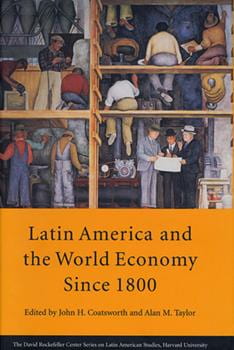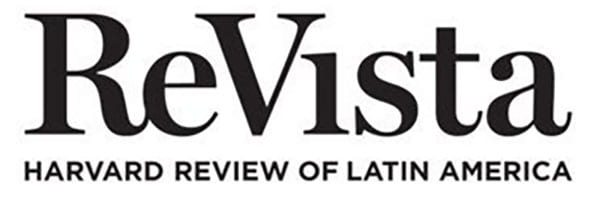A Review of Latin America and the World Economy

Latin America and the World Economy since 1800 edited by John H. Coatsworth and Alan M. Taylor
Latin America and the World Economy since 1800 edited by John H. Coatsworth and Alan M. Taylor marks a watershed in the research agenda. It is important for several reasons. First, as the editors argue, because it demonstrates that a coming methodology has achieved a critical mass. The new institutionalism, an approach based on neo-classical economic theory and quantitative methods, is here applied systematically to the study of the history of Latin America. Second, because of the level of empirical sophistication – the quality and range of data impresses. Several contributors are to be applauded for combining the best traditions in economic history research – empiricism and a rigorous application of theory. Third, because it focuses on under-researched, domestic dimensions of Latin American growth – for example, the formation of credit and capital markets, wage and price movements, lobby groups and policy evolution, the emergence of modern business and financial enterprises. There are micro (firm-level) studies, sectoral ‘performance’ analyses and assessments of long-run growth trajectories.
The book opens with a set of comparative essays that chart divergences within Latin America against external comparators. Contributors speculate about why the continent “fell behind” and whether Latin America (or some countries) are “catching up” with other players in the global economy, including the vaunted “tiger” economies of Asia whose image is now somewhat tarnished. Coatsworth compiles a set of intra-Americas benchmark indicators covering the 1700-1994 period. Alston, Libecap and Mueller contrast the securing of property rights on the frontier in the USA and Brazil. Hofman and Mulder look at growth and productivity in the twentieth century, marking the performance of Latin American countries against that of OECD economies: they devote particular attention to sector-level changes in Brazil and Mexico. Part II seeks to fill a major lacuna in the literature by considering the relationship between investment and growth. An understanding of the process of capital accumulation and allocation is fundamental as is an awareness of the role of financial intermediaries, actors and institutions. These chapters provide new data on the functioning of the Sao Paulo stock market around the turn of the century (Hanley), the Argentine banking system during the inter-war period (della Paolera and Taylor) and patterns of foreign investment during the twentieth century (Twomey). Part III examines the formation of markets – regional, national and international, exploring the extent to which price convergence occurred across time and space. This is a difficult task, given that the history of prices is itself under-studied. Writing on the Argentine in the early nineteenth century, Newland, uses demographic data as a proxy to assess ‘national convergence’. Triner is concerned with money market integration and, using interest rate approximations, finds that institutional changes facilitated concentration (in Sao Paulo) rather than seamless homogenization. Employing stock return data for the early part of the twentieth century, Nakamura and Zarazaga confirm the level of integration of Argentinian and international financial markets.
While there is a focus on the institutional throughout, chapters in Part IV explicitly employ quantitative tests to appraise the impact of specific institutional settings on productivity and welfare: namely, government regulation and financial market efficiency (in terms of providing finance for industry) in Brazil from the mid-nineteenth to the early twentieth century (Haber); pragmatic interventionism and the performance of the sugar sector in Cuba around the turn of the century (Dye); the impact of the Mexican Revolution on worker and peasant standards of living (Gomez-Galvarriato).
The final section, Part V, assess the efficacy of government policy in three crucial areas – ‘managing’ foreign capital flows, tariff strategy and money supply: Summerhill considers how a regime of state-guaranteed profits shaped investment in railways in imperial Brazil (i.e. before 1889); Marquez measures Mexican tariff rates for the period 1892-1909, exploring the extent to which tariff policy driven by a fiscal imperative served to protect and promote domestic manufacturing; Diaz Fuentes, charts changes in monetary policy in the three largest Latin American economies during the 1920s and 1930s, emphasizing the orthodoxy of the 1920s, when countries struggled to re-establish the gold standard (thought not necessarily pre-war parities), and the limits to monetary heterodoxy in the 1930s.
Latin America and the World Economy makes a significant contribution to the literature. It demonstrates how, with a shared methodological approach, analytical coherence can be imposed on a collection of chapters covering diverse periods, distinct national and sub-national themes and analyses that range from the case-study specific to the globally comparative. Several contributions are highly original, offering new evidence: others present stimulating results from on-going research: most are revisionist, challenging existing orthodoxies. An enduring legacy of the collection will be that it confirms the value of systematic archival work. Notwithstanding obvious problems of organization and, indeed, access confronting scholars seeking primary documents, this book suggests that rich resources remain to be explored in Latin America and that existing data sets might be re-worked to good effect. Diligence and imagination, coupled with a clearly defined research agenda can yield studies of quality. Another virtue is the combination of chapters by establish scholars and relatively junior academics about to embark on their careers. This is refreshing. Finally, the editors are to be commended for tolerating (possibly, encouraging) disagreement. On a number of key issues, contributions diverge over points of detail and explanation.
Spring 1999
Colin M. Lewis is Associate Professor of Latin American Economic History at the London School of Economics & Political Science and an Associate Fellow of the Institute of Latin American Studies, University of London.
Related Articles
A Review of A Promising Past: Remodeling Fictions in Parque Central, Caracas
A beacon of modern urban transformation and a laboratory of social reproduction, Parque Central in Caracas is a monumental enclave of 20th-century Venezuelan oil-fueled progress. The monumental urban structure also symbolizes the enduring architectural struggle against entropy, acute in a country where the state routinely neglects its role in providing sustained infrastructural maintenance and social care. Like other ambitious modernizing projects of the Venezuelan petrostate, Parque Central’s modernity was doomed due to the state’s dependence on the global oil economy’s cycles of boom and bust.
A Review of Bodies Found in Various Places
This bilingual anthology of Elvira Hernández, translated by Daniel Borzutzky and Alec Schumacher and published by Cardboard House Press, offers a comprehensive entry point into the work of the Chilean poet. The translators’ preface offers a valuable introduction that provides important context to her work and explains aspects of her poetry present in the volume, such as Hernández’s self-effacing “ethics of invisibility,” an ars poetica in which the poems stand in front while the poet hangs back, in a call to observe rather than to be observed. In this sense, Hernández has long written from the edges of Chile’s public life, partly by choice, partly by necessity: her birth name is Rosa María Teresa Adriasola Olave, but she adopted the pseudonym of Elvira Hernández under the Pinochet dictatorship.
A Review of An Ordinary Landscape of Violence
When first reading the title, An Ordinary Landscape of Violence, I asked myself if there is really anything “ordinary” about a landscape of violence? Preity R. Kumar argues that violence is endemic to Guyana’s colonial history and is something that women loving women (WLW) contend with and resist in their personal and public lives.




